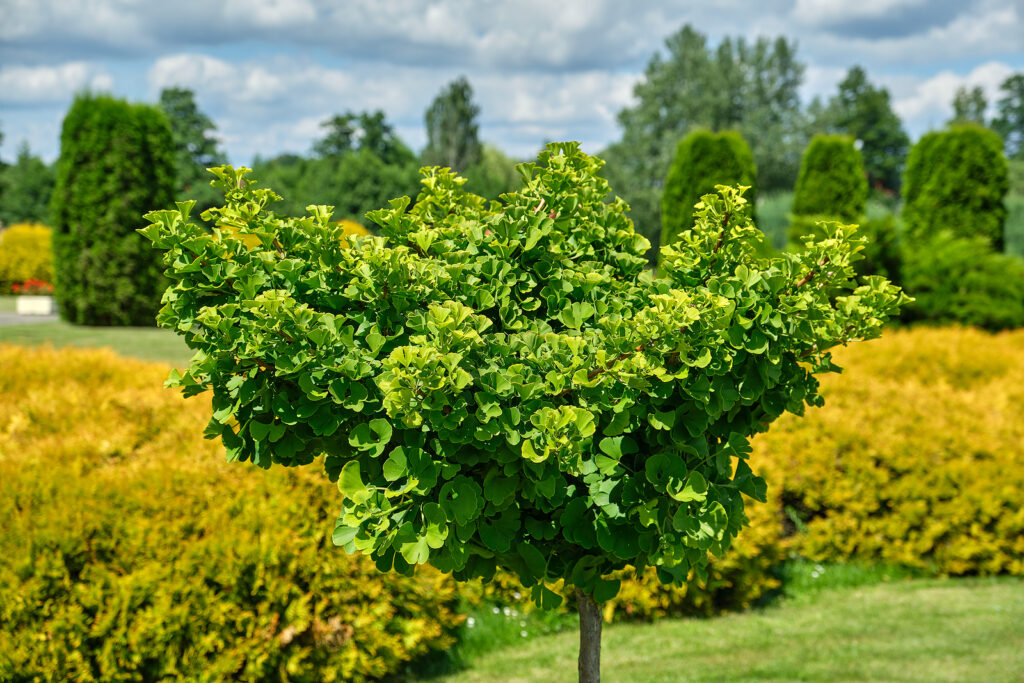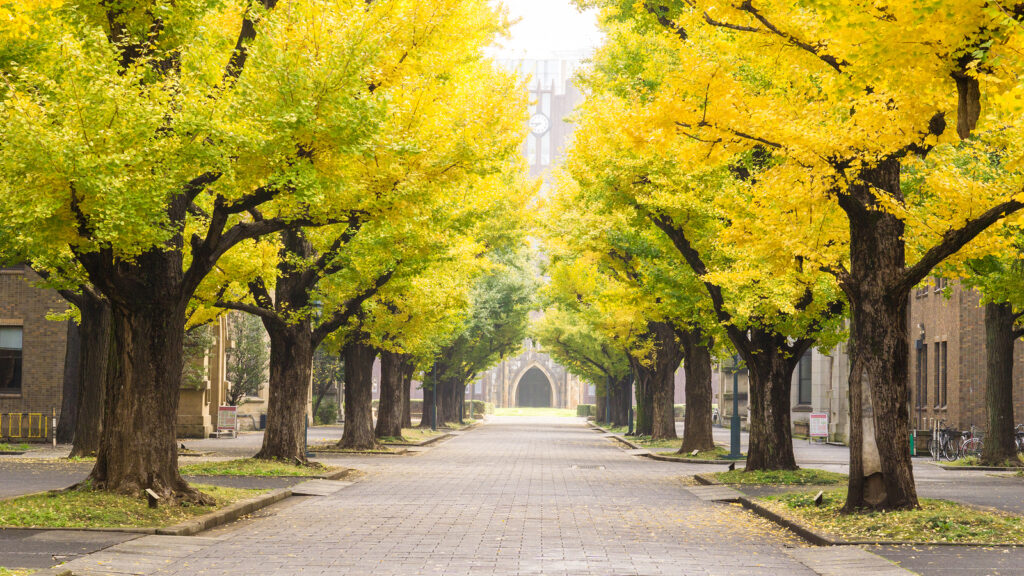Ginkgo is an Asiatic genus of hardy deciduous trees represented notably by one species, Ginkgo biloba, often called Maidenhair tree because of its attractive foliage that resembles in form that of the popular Maidenhair fern (Adiantum).
Ginkgo biloba tree grows to 35 feet (10.6m) tall with a characteristic diagonally upright form and flowers in loose catkins. Ginkgo is native to northern China and Japan; it is the sole survivor of a family of trees widespread in early geologic times.
The Ginkgo is much used as a street or park tree or for planting as a specimen where a picturesque effect is desired. It is hardy in northern regions and because of the rather leathery texture of the leaves practically free from insects pests and disease.
The Ginkgo is commonly a slow grower, about 1 foot per year, but under ideal conditions can grow up to 3 feet (.9m) each year.
Ginkgo is easily propagated from seed, by layer, and cuttings

Get to know Ginkgo
- Plant type: Deciduous tree
- Growing Zones and range: Zones 4 to 8
- Hardiness: Hardy
- Height and spread: Ginkgo commonly grows 35 to 50 feet tall and wide, but can grow to 70 feet tall; narrow to spreading umbrella shape
- Foliage: Fan-shaped leaves 1 to 4 inches wide; turn bright yellow in fall
- Flowers: Inconspicuous greenish-flowers; male and female flowers are borne on separate plants; female flowers are followed by orangish foul-smelling seeds.
- Bloom time: Early spring
- Uses: Specimen tree, street tree
- Common name: Ginkgo, Maidenhair tree
- Botanical name: Ginkgo biloba
- Family: Ginkgoaceae
Where to plant Ginkgo
- Grow ginkgo in full sun.
- Plant ginkgo in deep, moist, humus-rich, well-drained soil.
- Ginkgo prefers a soil pH of 5.0 to 8.0.

When to plant Ginkgo
- Plant container-grown ginkgo in fall or early spring.
- It is best to plant only male trees (grafted or grown from cuttings of male plants; female plants produce messy, fleshy, ill-smelling fruit.
Planting and spacing Ginkgo
- Space Ginkgo biloba 25 feet (10.6m) apart.
How to Water and feed Ginkgo
- Keep the soil evenly moist for best growth.
- Spread aged compost to the dripline at least once a year.

Ginkgo care
- Mulch around the ginkgo tree with aged compost to keep the soil evenly moist, especially when the tree is young.
- Stake young trees to keep stems growing straight; young trees may be brittle.
- Prune ginkgo in spring as needed.
Ginkgo common problems
- The fruit of the female tree has a foul odor. It is best to avoid planting female ginkgo trees in the landscape or near walkways, sidewalks, and streets.
- Ginkgo is attacked by few pests or diseases.
Ginkgo propagation
- Take cuttings of male trees in summer.
- Sow seed in fall (seed appearance does not distinguish the sex of the tree that follows; female trees are undesirable in the landscape)
Ginkgo cultivars to grow
Here are some commonly grown ginkgo cultivars:
- ‘Autumn Gold’ is a spreading male tree that has bright golden fall color.
- ‘Fairmount’ is fast-growing and with a broadly pyramidal form.
- ‘Fastigiata’ has a columnar habit.
- ‘Laciniata’ has deeply incised leaves.
- ‘Pendula’ has weak-growing pendulous branches.
- ‘Princeton Sentry’ has a narrow, conical shape.
- ‘Saratoga’ is erect and rounded and smaller than other cultivars.
- ‘Variegata’ has yellow and green leaves.















